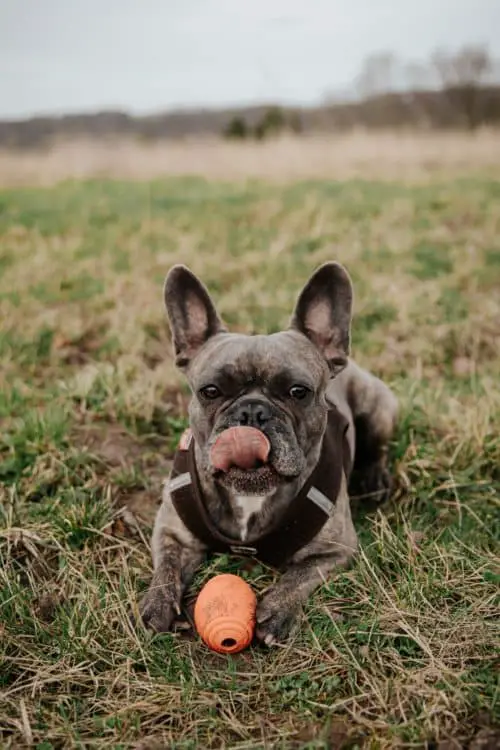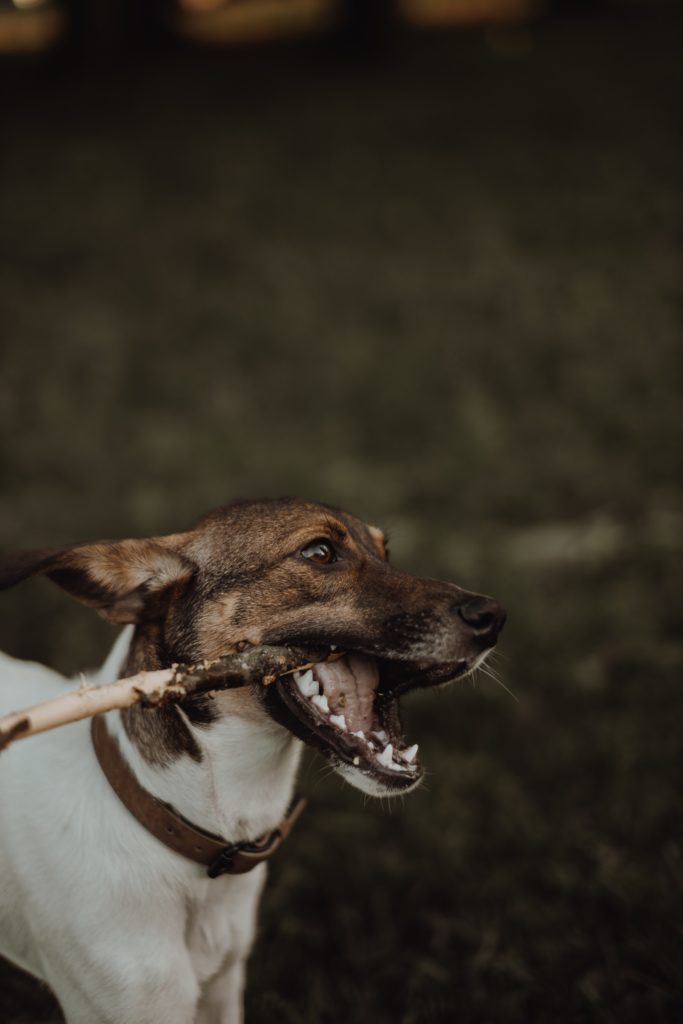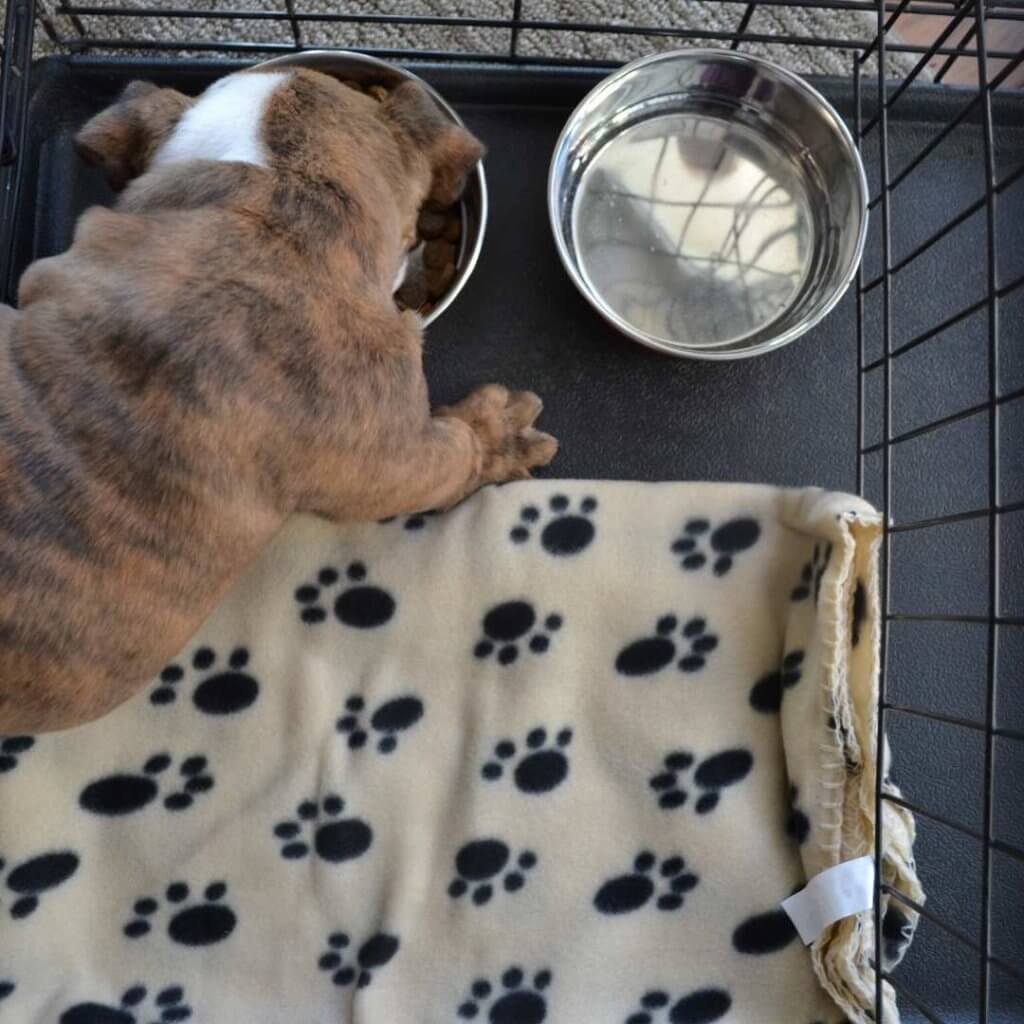Every owner knows that face. Your dog will lower his ears, lower his snout, and look at you with watery eyes. Most people will assume a dog is crying and asking for help. However, is this truly the way how dogs cry for help?
How can you know if your dog is in pain or just asking for attention and manipulating you?
There are several ways how dogs cry for help – and no, none of them include actual crying.
In the further article, we’ll explain how you can determine if your dog wants help or if he’s attention-craving. Let’s get started!
How Dogs Cry For Help And What Does This Mean?

Domestic dogs can often communicate without even making a sound. Believe it or not, not all of these requests are for snuggles or treats.
So how dogs cry for help, and how can you know they aren’t just clingy?
Here are a few most common ways your dog is letting you know he is uncomfortable or even in pain.
Cries
If you hear a dog crying, he’s undoubtedly trying to get your attention. Especially if this happens during the night or when someone comes in!
Dogs are prone to separation anxiety. If you’re asking yourself: “Why does my dog cry when I come home,” don’t worry.
This doesn’t mean he’s physically hurting. He is just anxious about you leaving him for a few hours.
This might also be the reason your dog is crying at night in a different room. Dogs are like little kids. If you leave them alone for just a little while, they’ll worry you might leave them.
They also fear that something terrible might happen to you.
However, if your dog doesn’t usually have an issue with being alone, but now he cries, he might be afraid. There is a chance he heard something that the human ear can’t perceive.
Some dogs are very skittish, and if they hear an animal outside, they will become anxious.
Sometimes, this dog cry sound is higher pitched or longer than a typical, attention-seeking cry.
Other times, however, there is no difference. You have to know your dog to notice if this isn’t usual for him.
Another reason your dog might be crying during the night is that he needs to go out.
Like, go out. While you can fix this just by taking your dog on a quick walk, we wouldn’t recommend doing so.
After going outside, the next step is playing, then eating, and so on.
If you walk your dog, he’ll continue with his activities like it’s the middle of the day. If your dog is a little puppy, ensure he has a diaper to pee on.
The same if he’s an elder that might not be able to hold up for a while.
However, if you have an adult dog that suddenly peed himself after crying, he might have some bladder problems.
Take him to the vet if you suspect this might be the case.
Flicking Toys

Dogs love to eat. That’s a common fact. Even when their stomachs are full, they’ll beg for food, especially if you’re eating.
However, there is a difference between a gluttonous dog and a dog who is starving. A dog who just wants a piece of that hotdog will look you in the eyes while you’re eating.
He might even beg or bark to let you know he wants some.
However, if a dog ‘flicks’ his toy in front of you, they are hungry and need to eat something. What does flicking mean?
This is when he holds his toy in his mouth, then throws it – usually towards the owner.
So if your pooch brings a toy to you, look at him closely. Maybe he doesn’t want to play. On the contrary.
He might be starving and desperately wants you to fill his bowl. So if you wonder how dogs cry for help, you should know they don’t always use their voice. Sometimes, the devil is in the details.
Digging

If you see your dog digging, you probably think he’s just playing around. Even the famous Cesar Milan says that’s how dogs exercise or get rid of excess energy.
However, there is more to this behavior than you probably realize. For example, your dog might be afraid.
If you notice your dog is digging during stressful events, such as a storm, he might be anxious.
During stressful events, dogs will need to find a way to get rid of the bad energy. Digging or destructive behavior is their most common resort.
Also, if your dog is afraid of something in the backyard, he’ll dig, trying to create a place to hide. If you have neighborhood dogs he dislikes or bought a new item, this might be the cause.
So, you know what to do if you catch your dog digging. Don’t immediately yell at him, especially if this behavior continues.
Instead, try looking at his surroundings. Maybe something is scaring him.
Keep in mind that some dogs are natural diggers, such as:
- Terriers
- Hounds
- Beagles
- Huskies
- Border Collies
These dogs will dig as this is in their instincts. Of course, digging might also be a sign of fear, but you shouldn’t worry right away.
However, if your dog isn’t a natural digger, make sure fear isn’t the cause of this sudden behavior change.
Chewing

Chewing is another sign that might mean your dog is asking for help. While you probably aren’t happy that he’s ruined yet another pair of shoes, try to have compassion.
If he is a puppy, he might be teething and in pain.
This is similar to human babies who use toddler teething toys. It isn’t a pleasant feeling when adult teeth are growing after the loss of baby teeth.
Your dog is chewing because he’s looking for relief. If you want to help him (and save your new Nikes), give him something else to chew on.
A cool washcloth is a great way to help them get relief. It will feel much more pleasant, and the coolness will ease the suffering.
Your dog might also be chewing out of stress. Another unexpected reason might be that he needs more nutrients.
This is especially common with dogs who are on calorie-restricted diets. Just think how you would feel if you were a kid put on a diet! Chances are you’d munch on everything you can find.
Make sure you contact the vet if you suspect he might be lacking something in his diet.
Excessive Licking
Dogs lick humans for a big number of reasons. For example, they might like the salt from your skin, or they know you like it.
Still, there should be limits to this behavior. If he is continuously licking you, he might be telling you he’s anxious.
Sometimes, this can even be a symptom of compulsive behavior. If he is constantly licking his paws, they might be itching him.
This can indicate allergies. If you notice your dog is licking himself all the time, consult your veterinarian. Your dog might be telling you he has some uncomfortable health issues.
How Dogs Cry For Help – 3 Warning Signs

Other than what’s mentioned, there are ways how dogs cry for help that are a sign of more severe issues. Here are three communication methods that shouldn’t be ignored – ever.
Take your dog to the vet immediately if you notice these symptoms.
Changes in Behavior
Any change of behavior is a serious sign that something’s wrong. This can include aggressive or antisocial behavior but also changes in a dog’s habits.
If your friendly dog suddenly starts snapping, he’s probably in some severe pain.
The same goes for when a dog sleeps more or loses his appetite. A dog trying to heal from something will sleep more.
In fact, too much sleeping might also be the sign he’s feeling so bad he can’t do anything else.
Difficulty eating solid food might be a symptom of dental pain. Restlessness can also be a sign of stress or even some painful underlying issue.
Being More Vocal than Usual
If a dog is in pain, he’ll cry more than usual, and chances are he’ll be louder.
Again, you have to know your dog to notice this change of behavior. If a quiet dog is suddenly growling, yelping, howling, or snarling, stay alert.
This is a common way your dog is letting you know something’s wrong. He might be in pain or stressed out.
Either way, this is something you need to check.
Changes in Posture
There are some bodily changes and changes in posture that are a sign something’s wrong.
For example, shallow breathing or panting heavily are huge warning signs. The same goes for limping or stiffness, which might indicate injury or arthritis.
Any swelling is a sign of some inflammation. Maybe your dog was stung by a bee, or he even has cancer. And if your dog suddenly starts shaking, he might be sick, or he ate something he shouldn’t.
How Dogs Cry for Help When in Crate and How to Deal with It?

If your dog is crying in a crate, he isn’t in pain – but he is asking for help, in a way. Puppies are common culprits behind those annoying night cries from the corner.
If you know how dogs cry for help when it’s needed, you’ll know they are stressed or looking for attention.
This is the usual problem with puppies.
To prevent your dog from crying, you should do proper crate training.
While crying is completely normal at first, over time, it gets annoying and exhausting. Not to mention that you shouldn’t want to let your dog be stressed!
Here are a few steps for how you can help your dog when he’s crying in a crate:
- Don’t let him cry it out. This will only further stress your puppy.
- Make them love the crate. Ensure they have enough treats and toys inside. Maybe even give him dinner while inside!
- The crate has to be comfortable and adequately sized. Give him some crate mats or rugs so he can tuck in.
- Place the crate in some area that you spend a lot of time in, such as your bedroom. Dogs can cry because they are lonely. If they can see and smell you, they’ll be calmer.
- Exercise your dog before crate time. If he has too much energy, he’ll get bored quickly and won’t settle down.
- If nothing else helps, give your dog potty breaks. This means spending a minute or two outside, on a leash. Just a chance for him to do his business, and nothing else.
Read Also: Dog Separation Anxiety During the Holidays
Bottom Line
There are many ways how dogs cry for help. While only you know your dog and know what is unusual, these were some signs that you should look for. Of course, you shouldn’t start panicking as soon as you notice something unusual.
Dogs sometimes just do new things out of boredom. Still, you’d want to have your vet on a speed dial, just in case.
Read Next: Can I Put My Dog In A Regular Backpack
